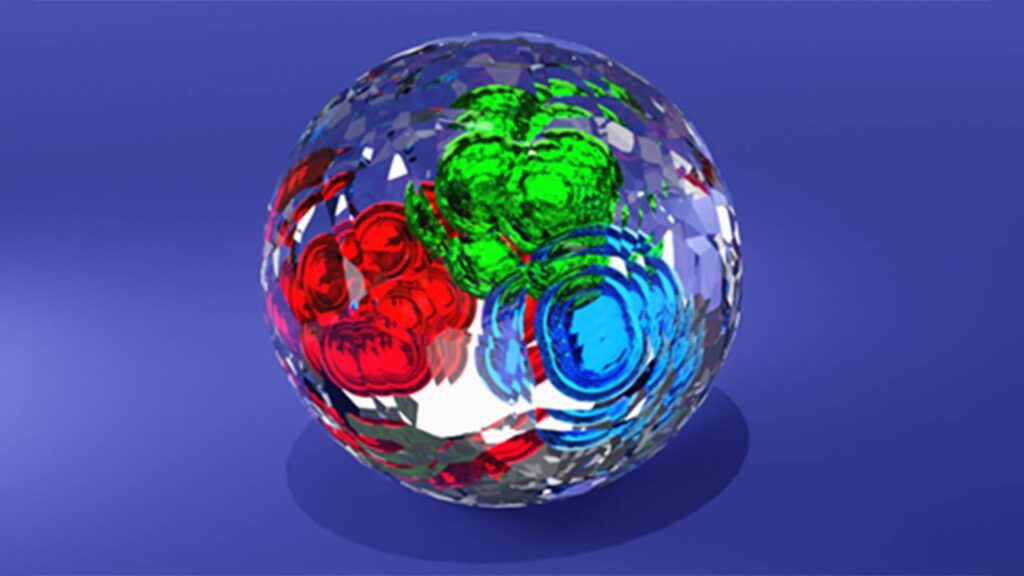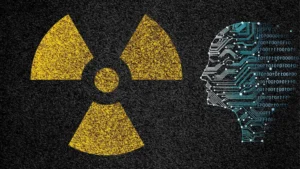Probing the Nuclear Glue: First Subthreshold Measurement of Gluon Distribution via J/ψ Photoproduction

In a pioneering effort to unveil the behavior of gluons within atomic nuclei, a team of physicists has achieved the first-ever measurement of subthreshold J/ψ photoproduction from nuclear targets using data collected at the U.S. Department of Energy’s Thomas Jefferson National Accelerator Facility. This measurement provides new insights into the gluon distributions inside protons and neutrons bound within nuclei, marking a significant advancement in understanding the strong nuclear force. Published in Physical Review Letters as an editor’s suggestion, the findings offer a new pathway to explore the quantum dynamics of gluons and challenge existing theoretical predictions, laying the groundwork for future investigations at Jefferson Lab and the upcoming Electron-Ion Collider.
1. Introduction
The subatomic world is governed by forces that are largely invisible yet immensely powerful. One such force—the strong nuclear force—is responsible for holding quarks together inside protons and neutrons and binding these nucleons within atomic nuclei. This force is mediated by gluons, massless, neutral particles that serve as the carriers of the strong interaction.
While gluons are well-studied within isolated protons and neutrons, their behavior inside nucleons bound in a nucleus remains less understood. Addressing this knowledge gap is crucial to furthering our understanding of quantum chromodynamics (QCD) and nuclear structure. In this context, a collaborative research team has achieved a breakthrough by directly measuring gluon behavior within nuclei via subthreshold J/ψ photoproduction, a first in the field.
2. Scientific Background
For decades, physicists have known that quarks, the fundamental constituents of protons and neutrons, behave differently inside a nucleus than in isolation. This phenomenon, known as the EMC effect, remains one of nuclear physics’ enduring mysteries. Gluons, which play a central role in binding quarks, are hypothesized to exhibit similar effects when inside a nucleus, yet direct experimental evidence has been lacking due to the technical challenges involved in probing neutral particles that interact exclusively via the strong force.
A promising avenue to investigate gluons is through the photoproduction of J/ψ particles—bound states of charm and anti-charm quarks. These particles are ideal probes because their formation is directly linked to gluon-photon interactions, rather than quark interactions, providing a clean signal of gluonic behavior.
3. Experimental Methodology
The experiment was conducted at Jefferson Lab’s Continuous Electron Beam Accelerator Facility (CEBAF), utilizing its high-energy electron beam to produce a photon beam capable of inducing nuclear reactions. Using the GlueX detector, the team directed this beam at nuclear targets composed of deuterium, helium, and carbon, rather than solitary protons or neutrons.
Notably, the energy of the photons used in this experiment was below the 8.2 GeV threshold typically required for J/ψ production from stationary protons. However, within a nucleus, the internal motion of nucleons (known as Fermi motion) adds kinetic energy to the photon-nucleon system. This enabled the subthreshold production of J/ψ particles.
These J/ψ particles quickly decayed into electron-positron pairs, which were detected and analyzed to determine the production rates and thus infer the gluon distributions within the nuclei.
4. Results and Significance
The research team successfully measured J/ψ photoproduction below the threshold energy, marking the first such observation from bound nuclear targets. The results showed that more J/ψ particles were produced than theoretical models had predicted, suggesting that gluons within bound nucleons may behave differently compared to their free counterparts. This may point to a gluonic EMC effect, analogous to the quark-based phenomenon first observed in the 1980s.
According to Axel Schmidt of George Washington University, this result “represents a big step forward” in locating and understanding the gluon field within the proton. Or Hen of MIT emphasized the pioneering nature of this measurement, stating that the field of nuclear glue remains largely uncharted and full of opportunity.
5. Challenges and Innovations
One of the key innovations of this research was the use of light-front dynamics, a technique that applies quantum field theory to relativistic systems. Jackson Pybus, a graduate student at MIT, led the data analysis using this method, which he had studied during a summer program in Germany. His contribution was instrumental in extracting meaningful data from a dataset that was initially collected for other purposes.
The successful implementation of this technique underscores the importance of interdisciplinary collaboration and theoretical rigor in modern experimental physics. As Hen noted, “None of us, except for Jackson, would have been able to do this work.”
6. Future Directions
Although the data analyzed consisted of just dozens of J/ψ events collected during a brief six-week run in 2021, it has opened up new research possibilities. The team has proposed a dedicated experiment to further investigate gluon behavior in nuclei, hoping to secure an extended CEBAF run for more detailed measurements.
Moreover, the results provide critical insight for planning experiments at the Electron-Ion Collider (EIC), a next-generation facility designed to explore the role of gluons in protons, neutrons, and nuclei with unprecedented precision.
According to Schmidt, “We would like to learn about this problem and have a good handle of what’s going on and where to look prior to this machine turning on.”
7. Conclusion
This groundbreaking measurement of subthreshold J/ψ photoproduction from nuclear targets represents a pivotal moment in nuclear physics. By providing the first direct glimpse into the gluonic structure of nuclei, the study lays the foundation for a deeper understanding of the strong force and the complex dynamics of nuclear matter.
As physicists continue to map the behavior of the nuclear glue, they not only push the boundaries of fundamental science but also pave the way for future technologies powered by deeper insights into matter and energy.
References:
- Physical Review Letters (Editor’s Suggestion), 2025
- Jefferson Lab News and Reports
- Interviews with Axel Schmidt, Or Hen, and Jackson Pybus


